Burnley, under Sean Dyche, have had a fail-safe template for surviving the Premier League – tough, sturdy defending combined with direct attacking and a strong home record. Turf Moor has not been the best place for a youngster looking to make his mark on the game – indeed, Burnley had not given a Premier League start to a player under the age of 20 since they were promoted.
That record changed this past season, as Dwight McNeil found himself an integral part of Burnley’s lineup in the latter half of the campaign. His introduction to the team in December coincided with the Clarets going eight matches unbeaten in the league, and although they did stumble and lose four straight games thereafter, Burnley managed to survive for yet another season amongst the Premier League elite.
McNeil was instrumental through all of this, with the statistics bearing this out – he was tied for the most goal involvements by a teenager (eight) in the Premier League with Fulham’s Ryan Sessegnon, while he finished the season ranked second for completed dribbles in the Burnley squad, having played around 40% of the minutes of those above and below him.
This tactical analysis piece will look at the former Manchester United trainee and what his strengths and weaknesses are.
McNeil’s footballing education started off at Manchester United, where he was part of the youth teams before he joined Burnley’s academy in 2014. He actually played as a striker for the U-18 and Development squads, before gradually being moved out wide to the left wing. McNeil was named Burnley’s Youth Team Player of the Year in May 2018, and made his first-team debut later that month as a substitute in the final game of the season against Bournemouth.
The Englishman started Burnley’s league game against Manchester United in September last year, but was then nowhere to be seen until a substitute appearance against Everton on Boxing Day. That was the catalyst, as the 19-year old started all of Burnley’s league games since then, scoring his first Premier League goal on 30th December against West Ham United.
He ended the season with three goals and five assists, and his creativity played a big role in Burnley’s eventual survival. It was no surprise that the club signed him to a new three-year contract in January, and even that may not be enough to keep him at Turf Moor if he continues in the same vein come the new season.
Positioning
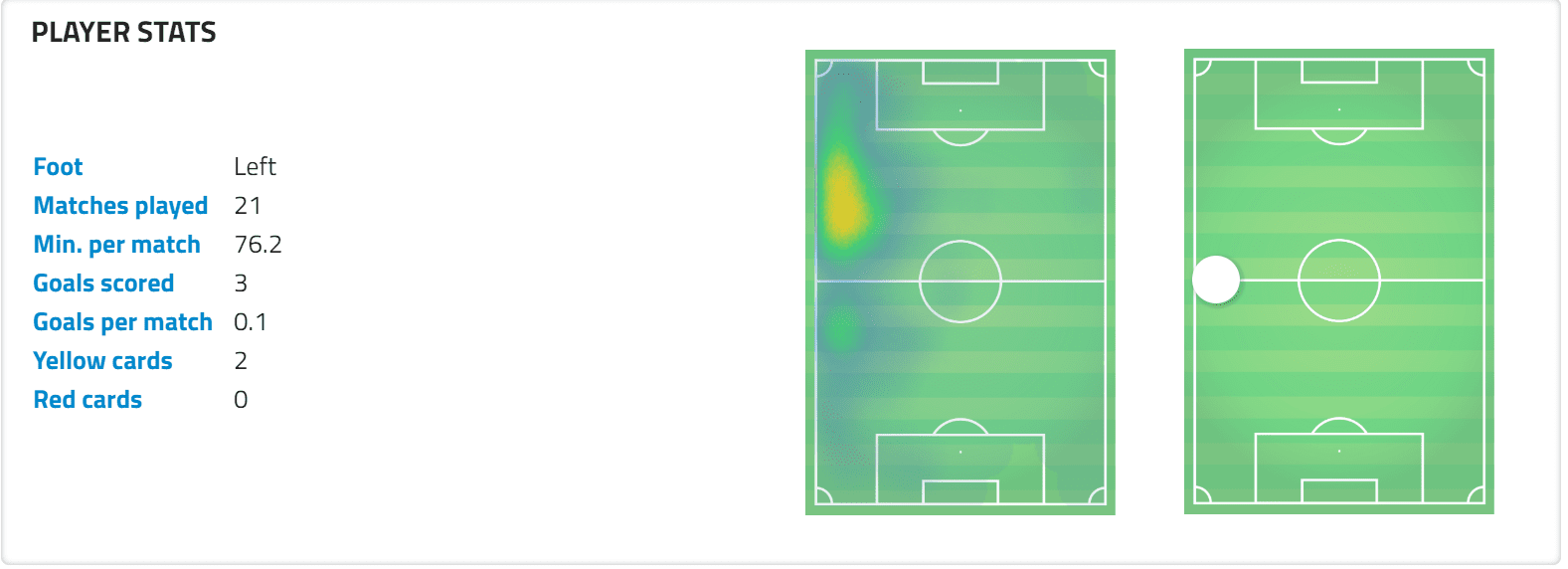
As the heat map above shows, McNeil primarily plays on the left-hand side of the pitch. As a left-footed player, this makes him a traditional winger, which is a bit of a rarity in today’s game where inverted wingers are more commonly found. McNeil usually stays wide on the left to receive the ball and prefers to run at the opposition full-back rather than cut inside.
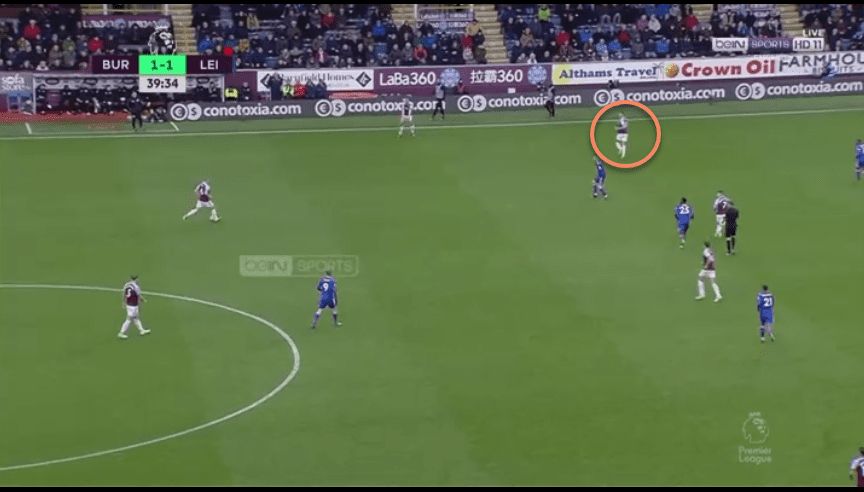
He struck up a good relationship with Charlie Taylor, the Burnley left-back, and the duo combined well whenever they were on the pitch together.
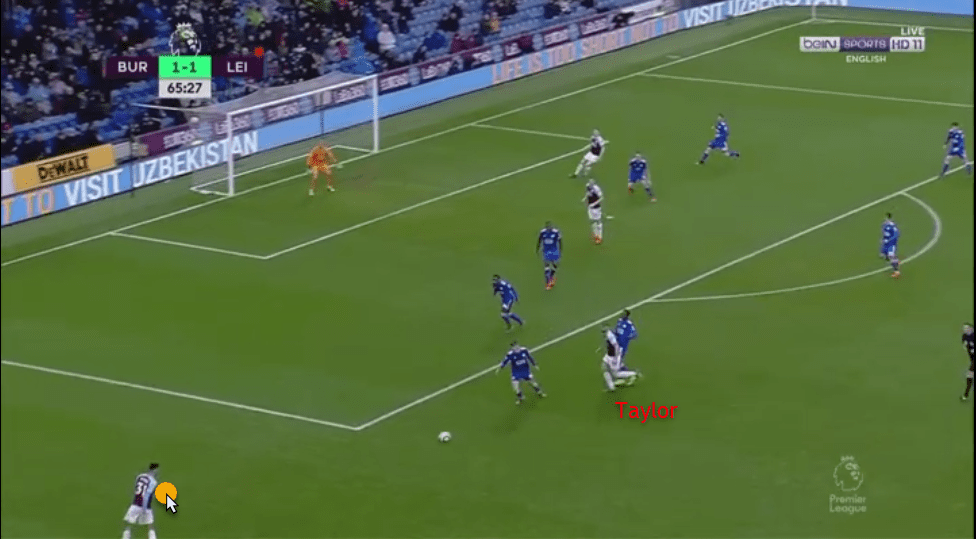
Style of play
As mentioned previously, McNeil is a traditional winger, and he usually looks to get into good positions before crossing the ball, whether from the byline or further out.
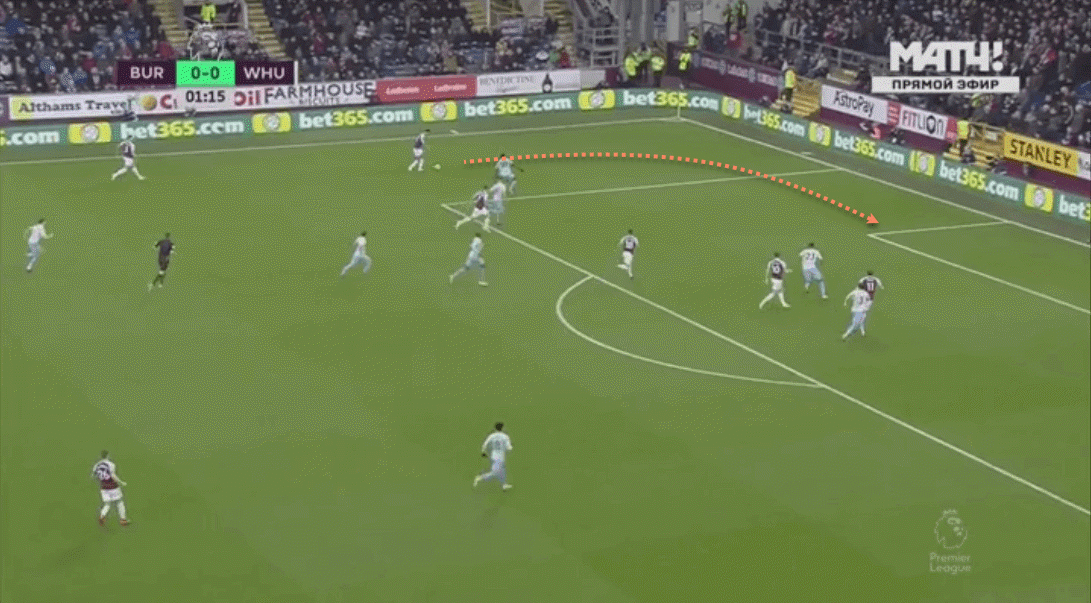
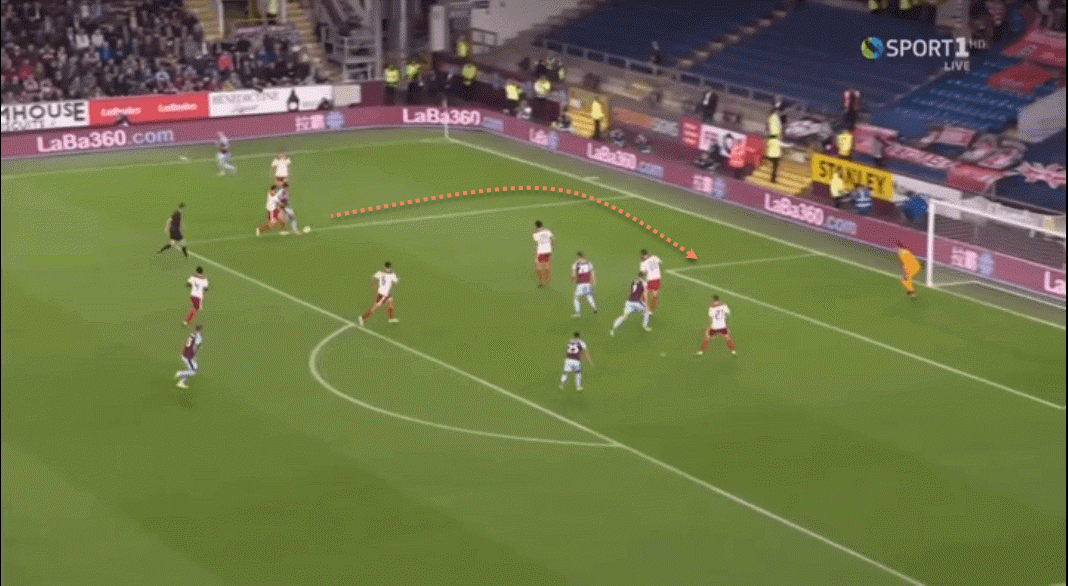
Despite being only 19 years old, he is already an accomplished crosser of the ball. McNeil’s crosses are usually accurate, and he also knows what trajectory to apply in which scenario, whether it be a low, fizzing cross or a looping, high one.
The Englishman stays wide on the left, drawing the opposition full-back out towards him, which helps create space for the strikers to move into. Burnley usually play in a 4-4-2 system, which works to McNeil’s strengths as a winger – it gives him two men to aim at in the box, while his movement opens up the channels for those strikers to move into. On occasion, he comes inside as well when his left-back is overlapping but primarily tries to hold his position wide on the left flank.
Dribbling
McNeil’s position as a wide attacker means that he has to be a good dribbler to thrive, and the youngster does not disappoint. Apart from the dribbling statistics mentioned above, another notable statistic is that McNeil completed 1.5 dribbles per game in the Premier League, which compares favourably to Ryan Sessegnon’s 0.9 dribbles per game.
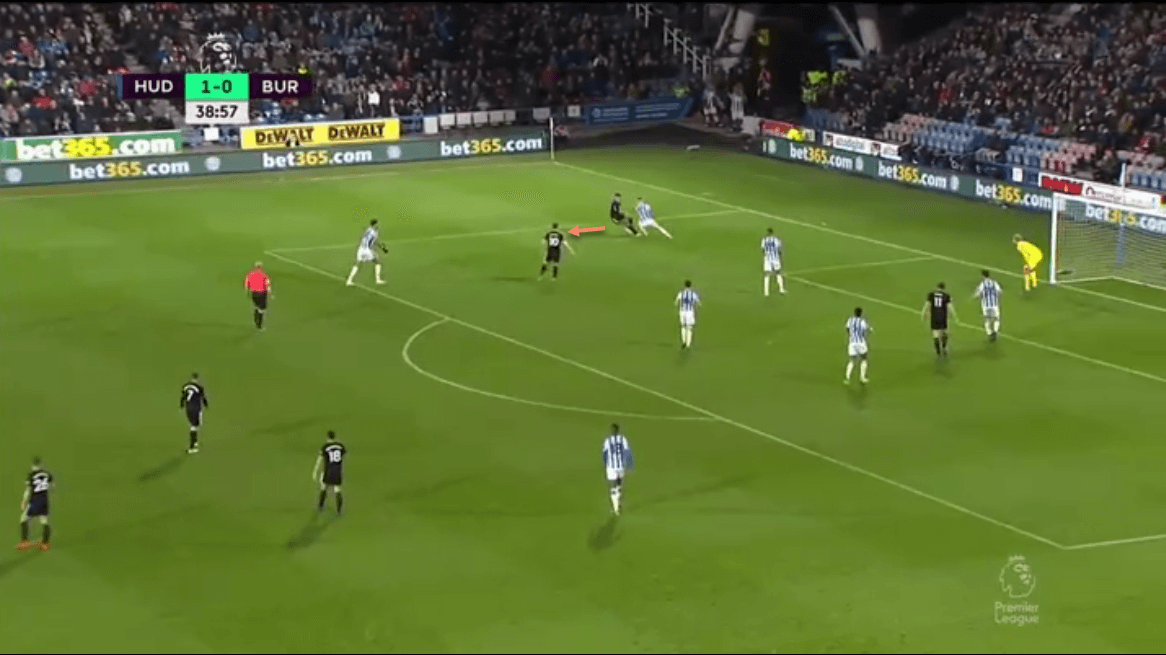
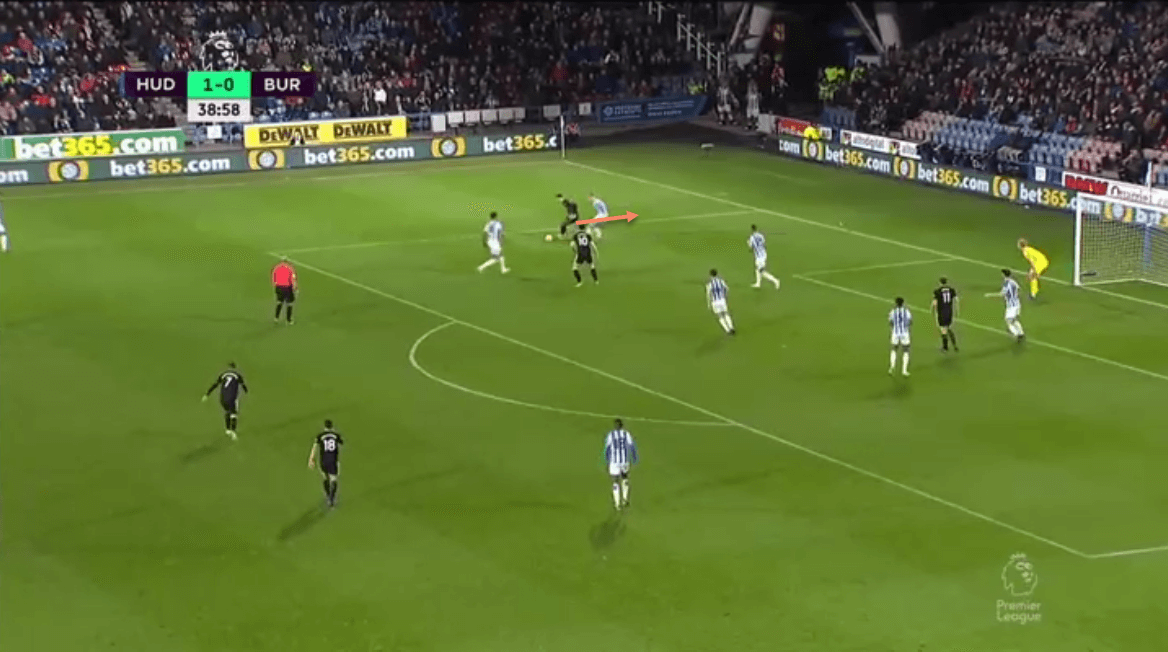
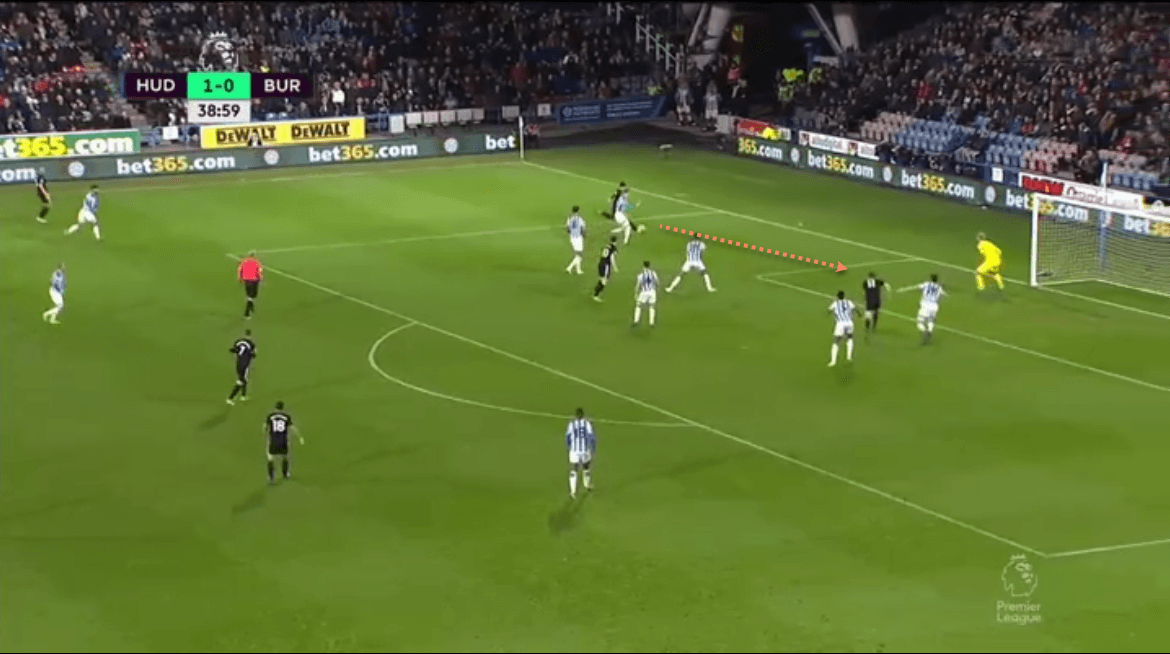
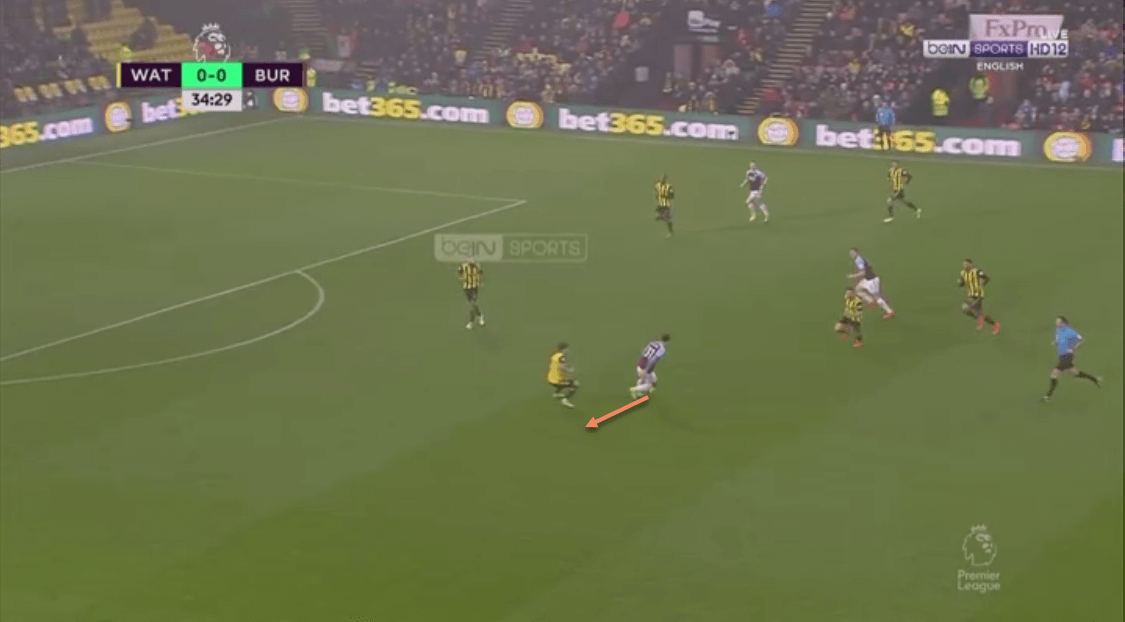
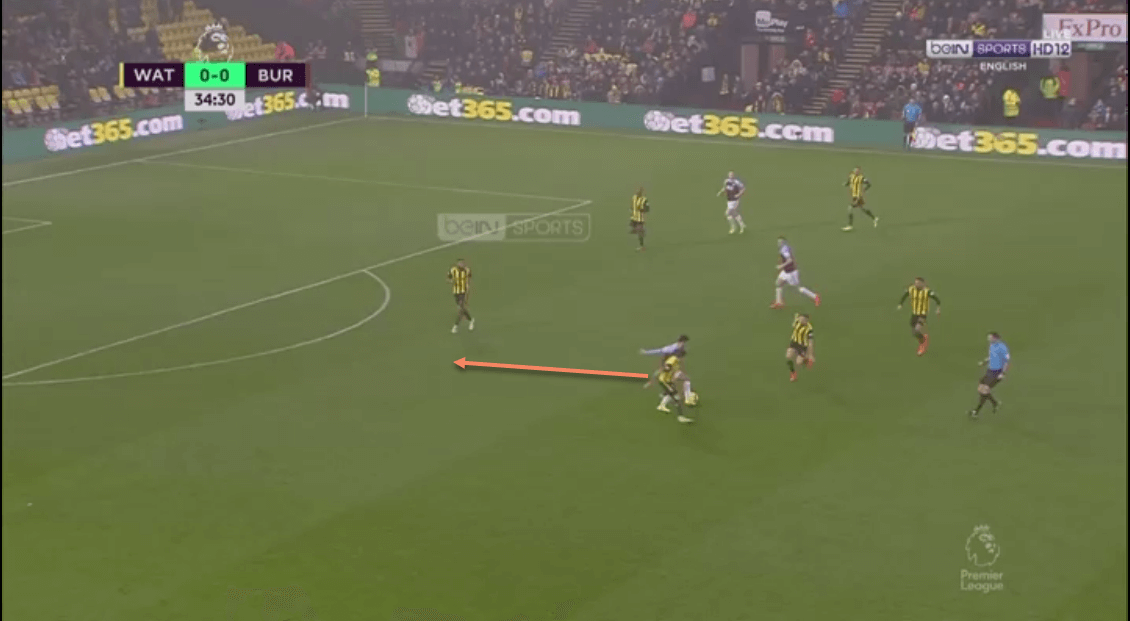
As the images show, McNeil is especially good at feinting to go in one direction before moving in the other direction, leaving defenders clueless about his next move and creating space to run or put in a cross.
Passing
This can be said to be the one weakness to his game. Despite making 1.2 key passes/game in the Premier League last season, McNeil does tend to pick the wrong option at times, and his pass success rate of 75.7% reflects this. Nevertheless, it is something which can be improved through work on the training ground as well as more experience on the pitch.
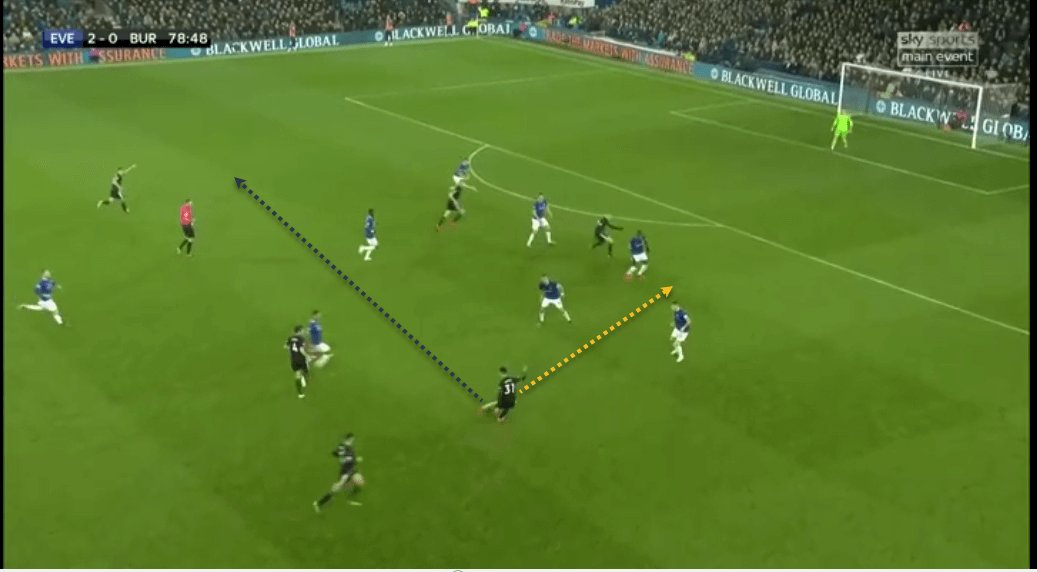
Conclusion
Dwight McNeil’s inclusion in the Burnley side was one of the biggest factors behind their eventual survival in the Premier League last season. The youngster has all the attributes to be a top winger, and with half a season of first-team football under his belt, he should be able to kick on and truly establish himself as one of the Premier League’s best young players next season.
If you love tactical analysis, then you’ll love the digital magazines from totalfootballanalysis.com – a guaranteed 100+ pages of pure tactical analysis covering topics from the Premier League, Serie A, La Liga, Bundesliga and many, many more. Get your free copy of the FIFA Women’s World Cup 2019 Preview magazine right here and sign up for a ₤50 annual membership (12 monthly issues plus the annual review) right here

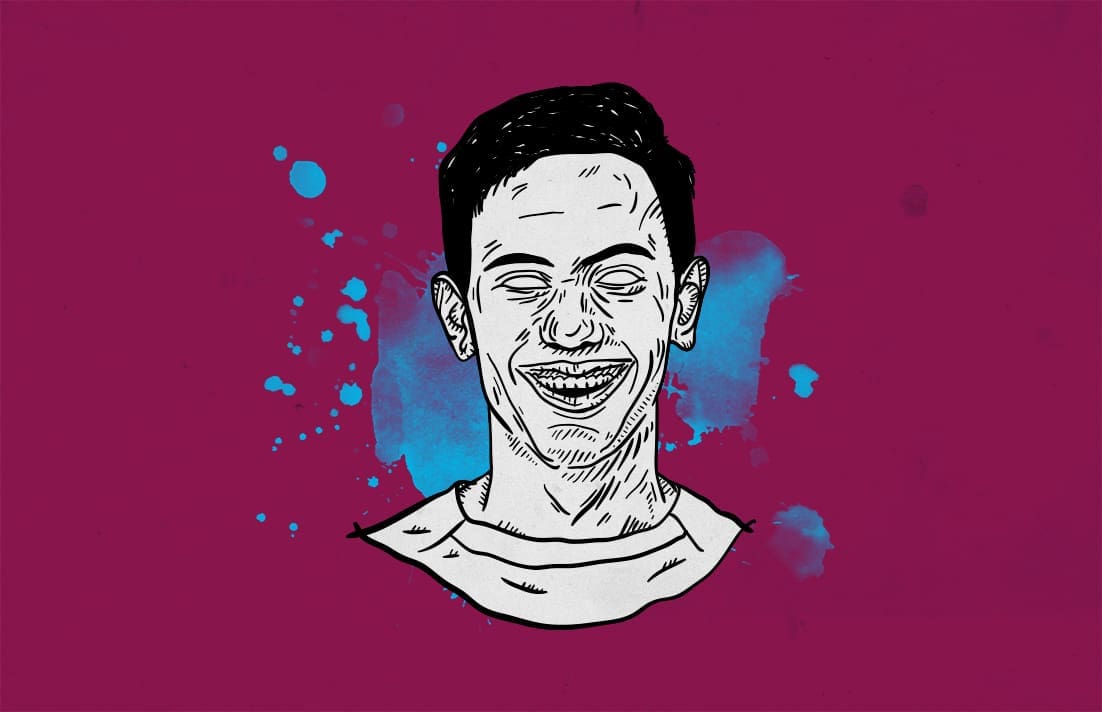



Comments